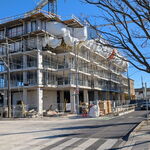crs1026
Superstar
You are shifting the goalposts. First you came with “what DMUs” and now it’s “why DMUs”.
To the latter I answer, to begin, “the same functions that the RDCs do now”, but more of it. Replace Jonquiere/Senneterre, replace Jasper-Prince Rupert. Run a shuttle into the Gaspé rather than haul all the way from Montreal. Route prove service to Sherbrooke, or a Kingston/Brockville to Ottawa commuter service. Build a network of services in Nova Scotia. Lots of things to be done if there is the will to do it.
Virtually all of the startup routes that you suggest have such a high capital cost to fix/restore tracks etc that the train itself is not material. Kingston-Ottawa likely can likely be protected within HFR equipment cycles. One or two trainsets laying over in Kingston at night instead of T-O-M is all that’s required. Likewise Sherbrooke.
I have to assume that the first class dome service on the Skeena adds revenue - otherwise it wouldn’t be offered. That service likely would net less with DMU. Jonquiere/Senneterre is interesting but again, money spent buying DMU’s for that one service? Gaspe remains marketable as a long distance train if equipment remains available. Throwing passengers off the Ocean at 06:30 to catch a DMU is not appealing. I can see the benefit of a train out of Halifax that splits at Moncton, with one section going to Saint John while the other goes to Bathurst…. the biggest advantage to the DMU may not be reversibility, or fuel efficiency, but in combinability. But again, the track costs are what stand in the way of that service.
The RDC is valued (romantically) because it extended the life of rail service on routes where full scale trains had ceased to be economical. While that preserved the network for 15-20 years, show me a line that did not die anyways eventually. The RDC was a death delayer, not a ridership builder. Times have changed but even so I’m not sure that is reversible…. you can’t reinstate an RDC and hope it grows to a full size train business. The Venture order has cab cars, heat is now HEP not steam, work rules have changed….the gap in economics may not be all that great.
The goalposts have moved a lot since VIA retired its RDC fleet.
- Paul





